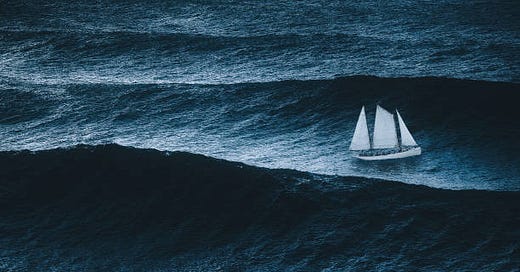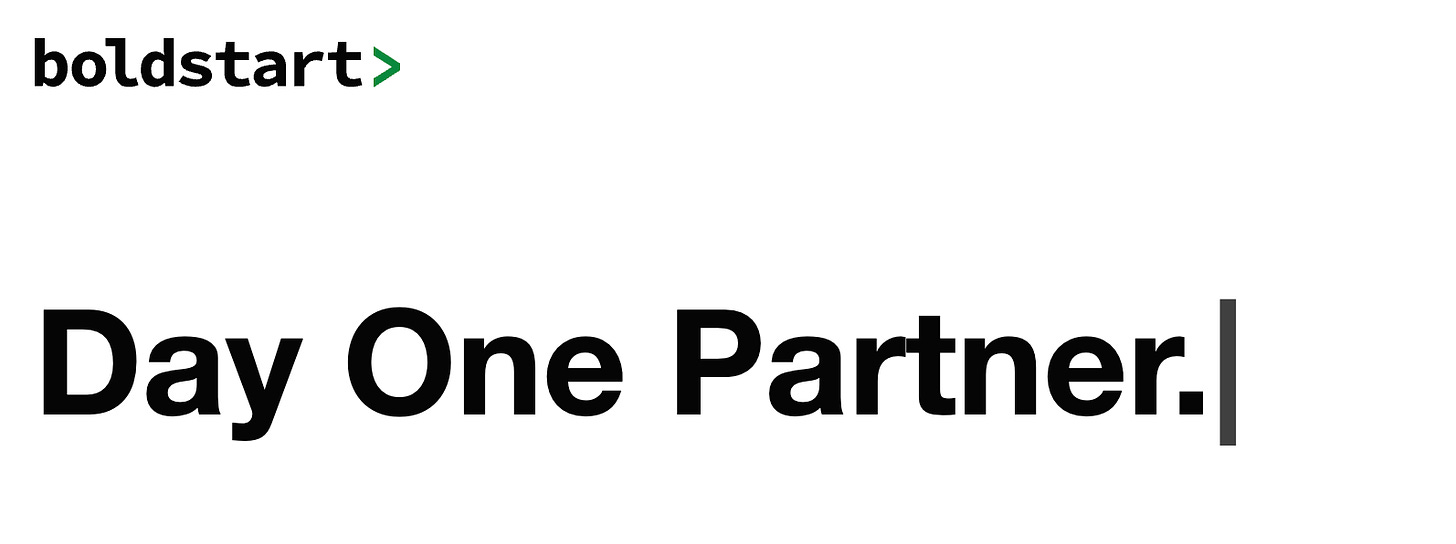Tailwinds: What's in a Thesis?
Time for an entertaining and only slightly relevant anecdote. In 1964 the film Mary Poppins was wildly successful. After watching it as a kid it stuck this phrase in my brain:
"Winds in the east, mist coming in. Like somethin' is brewin' and 'bout to begin. Can't put me finger on what lies in store, But I feel what's to happen all happened before."
The phrase jumped to my mind as I started to think about headwinds and tailwinds. I was then reminded of a more recent Mary Poppins. In 2018 Disney made a sequel to Mary Poppins. Hundreds of critics loved it, but one of them was much more negative.
We took my three year old niece to see the movie in theaters. She was even more fidgety than usual. At one point another little boy in front of us got taken out by his Mom to go to the bathroom. My niece excitedly observed this behavior, and then leaned over to us.
"I need to go to the bathroom."
Confused, we responded that she was wearing a diaper and didn't know how to use the bathroom. She hesitated for a few seconds before coming clean.
"I don't want to watch any more of this movie."
You can't please everyone.
When I thought about that line about winds and change I thought about my list of tailwinds that I've come across in my career. What feels like a pivotal part of crafting any "investment thesis" feels woefully under discussed. What is a “tailwind?”
Reading The Winds
Over the last 7 years as an investor I've written dozens of investment memos. Some of them have been 40+ pages, some have been 8-slide decks, and others have been 2-3 page overviews. Regardless of the format the core idea that most memos are trying to communicate can be boiled down to one core thing: the thesis.
For me an investment thesis is made up of two parts: (1) what is the 'big deal?' and (2) why is this company well positioned to take advantage of it?
In terms of what I mean by a “big deal,” I’m referring to the big idea or trend that makes this an interesting topic. Before you even get to the company you’re trying to understand the reality of the world that this company is taking advantage of. Investors often use the phrase "tailwind" and "headwind."
Volumes could be written about the mixed metaphors that are butchered across all of venture capital. But these two phrases are pretty straightforward. A tailwind blows in the direction you're traveling and pushes you forward. A headwind blows against you and makes the going more tough.
You can have a powerful tailwind with no good company to ride it and you can have a great company with no tailwind. When developing an investment thesis it's focused on both. But understanding the tailwind and why it's a "big deal" can help focus your efforts in evaluating the company tackling it and how well they're positioned.
When I look at some of the tailwinds I've seen throughout my career each of them represents interesting investment opportunities (in no particular order of importance or recency):
New workloads deployed in a cloud-native environment will jump from 30% in 2021 to over 95% in 2025
64% of GenZ don't have a credit card and want to avoid them.
The construction of new manufacturing facilities in the US has soared 116% over the past year.
The demand for carbon offsets is expected to increase 15x between now and 2030
Costs from ransomware attacks increased from $325M in 2015 to $20B in 2021.
Creativity and critical thinking scores for US students have dropped significantly since the 1990s.
So much of investing revolves around evaluating the company, and I don't think that's a bad thing. But so often the biggest misses in investments that I see come from either a complete lack of a tailwind or a fundamental misunderstanding of what the tailwind implies.
When I see these trends I pay attention. I try and understand them at more than just a surface level. But I certainly can't be an expert across verticals so I rely on sensemakers.
The Sensemakers
I've written before about the importance of developing a decentralized brain:
"Basically the idea [is] that I can't know everything, so I should know people that know things I may need or want to know about. As an individual you can dramatically increase your odds of understanding and taking advantage of all the exciting things getting built in our increasingly complex world by establishing a decentralized brain."
There are people in my life that I rely on as "nodes" in my decentralized brain. In other words, they act as sensemakers for particular areas of culture, technology, and policy.
Rex Woodbury: Culture & Web3
Rex is not only one of my very good friends but he's filled a massive gap in my own knowledge base. I've always joked that I'm not a very good consumer investor because I'm not a very good consumer. I'm never early on any trends of fashion or online activity. Rex's writing in Digital Native have become my node for understanding some of the cultural things I'm experiencing but don’t yet fully appreciate.
The OpenView Crew: Product-Led Growth
Blake Bartlett has been leading the charge building awesome content around product-led growth for years. I remember reading their "State of Product Led Growth" posts back in 2019 and realizing they effectively coined the term! Following Blake and his colleagues like Kyle Poyar have helped me take PLG beyond an understanding of the trend and deeper into some of the science.
The Boldstart Crew: DevOps & Infrastructure
DevOps and data infrastructure is a space I've had the chance to invest in a lot and very few folks command the respect for their perspective that I have for the Boldstart team. Especially what I've had the chance to learn from Ed Sim and Shomik Ghosh. Their perspectives have been huge to deepen my understanding.
Muji @ Hhhypergrowth: Technologist on Technology
Muji is unique in that he has been a technologist getting into the weeds but now he's stepped back to raise the bar for technical understanding of the most interesting products come out of technology companies.
There are so many others like Ben Thompson, Morgan Housel, Mario Gabriele, Justin Gage, and Software Stack Investing that I turn to in order to deepen my understanding of a variety of topics.
What's important is not whether everyone is following the same sensemakers. It’s whether you have found the people who help deepen your understanding and push the depth of your thinking.
Building Knowledge Banks
A lot of my sensemakers are VCs and I'm sure there is some fair criticism behind that. But I think most sensemakers are also investors of some kind because the skillset to evaluate a trend is not typically something that comes up day-to-day for operators in the weeds. It requires you to take a step back and appreciate the big picture. The job that most lends itself to that is investing.
When I talk about this idea of tracking trends and paying attention to sensemakers its always much more difficult to execute for non-investors. One of the benefits of being an investor is the number of data points you're able to gather. Pointing to trends is a lot easier when your N > 1.
I've written before about this concept of collecting a portfolio of ideas or trends. This was mostly in the context of how I collect these ideas in Roam but the principle is relevant:
"These are big-picture ideas that I collect lists of articles, concepts, and experts around. When I was 11, I wrote a business plan on a napkin for building a city starting with a bunch of condos. [Now my portfolio idea revolves around "City Building"]. If you're a curious person, I guarantee you have portfolio ideas. The act of just acknowledging those ideas is powerful."
Over the course of my career as an investor I've had the chance to enrich my portfolio of trends with investments I’ve made that make me smarter on the trend.
PLG = Figma, Notion, Airtable, Roam
Data infrastructure = Snowflake, Confluent, Databricks
DevOps = HashiCorp, Gitlab, Snyk
SMBs = Servicetitan, Toast, Teamshares
Whether you're an investor or not the more you can build up an understanding of different trends the more you'll start to see patterns that can be applied in other areas. Whether with other companies, or in companies you want to start. Understanding the headwinds and tailwinds in life make you a much more informed participant.








